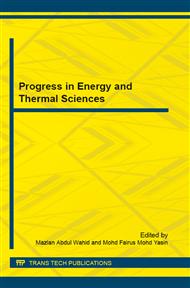p.156
p.169
p.174
p.179
p.184
p.213
p.219
p.223
p.228
Prediction of Performance Equations for Household Compressors Depending on Manufacturing Data for Refrigerators and Freezers
Abstract:
A semi-empirical model has been investigated to represent household compressors. The model based on calorimeter data for two distinguished brand (Danfoss and Electrolux CUBIGEL) and compared with eight brands consisting of ninety compressors model. The calorimeter data are correlated (according to ARI standard 540-90 [1] and working refrigeration temperature cycle for ASHRAE Technical Committee 8.9[2]) as a function of refrigerant saturated evaporating temperatures from (-35 to 10) °C and swept volume range (2.24-11.15) cm3 keeping of the refrigerant saturated condensing temperature constant at 54.5 °C. The correlations were found with ten-coefficient polynomial by using Matlab software – surface fitting method for cooling capacity, power consumption, and refrigerant mass flow rate.In addition, other equations for cooling capacity, power consumption, and refrigerant mass flow rate at-23.3 °C evaporator temperature, 54.4 °C condenser temperature, and 32 °C temperature for liquid line which is the base points of the refrigerator cycle according to ASHRAE[2] , cover the range (2.42-11.15) cm3 swept volume which are created to quick choose the proper compressor.The result indicated that the surface fitting models are accurate within ± 15% deviation of compressors data of seventy-two models for cooling capacity, fifty models for power, and twenty-five models for refrigerant mass flow rate.
Info:
Periodical:
Pages:
184-209
Citation:
Online since:
January 2016
Keywords:
Price:
Сopyright:
© 2016 Trans Tech Publications Ltd. All Rights Reserved
Share:
Citation:


